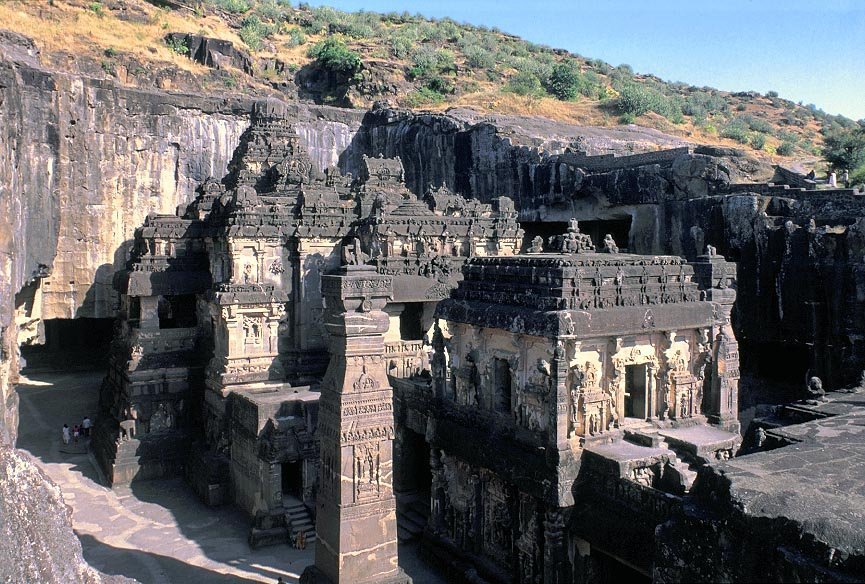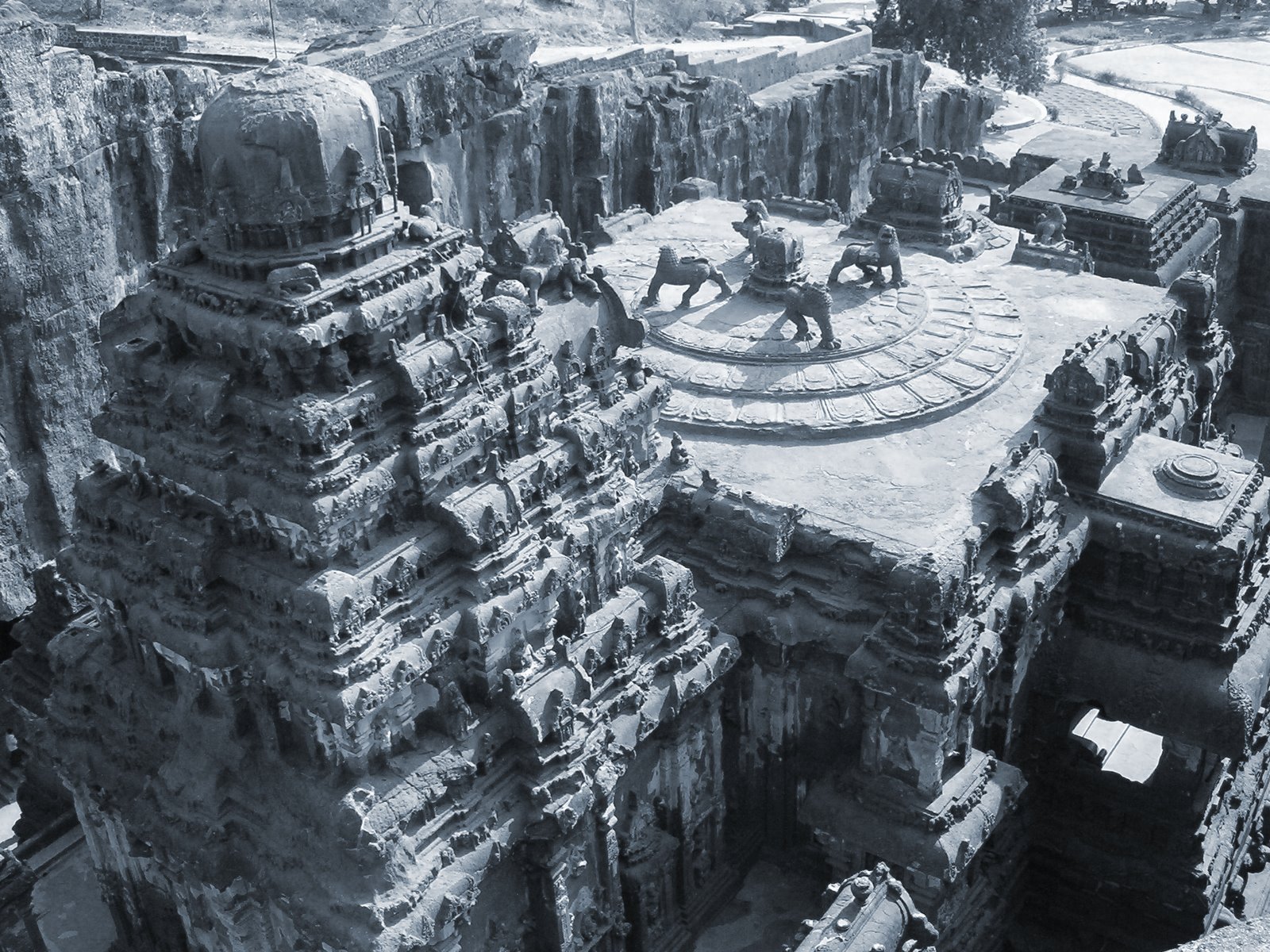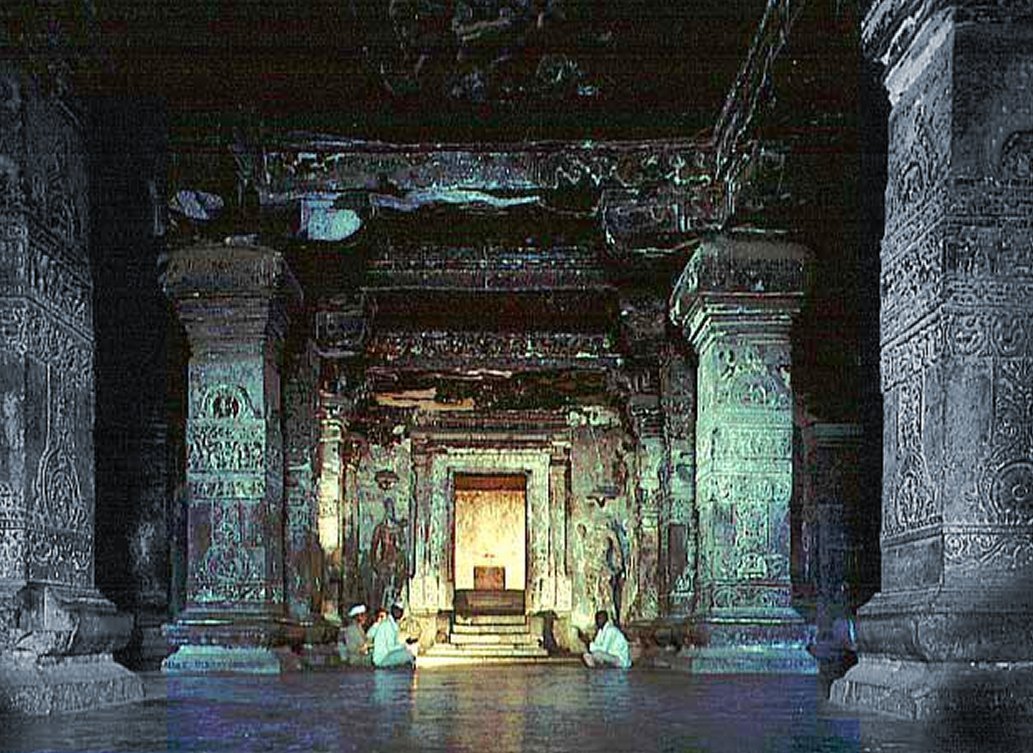
Gigantic Kailasa Temple Emerging From A Mountainside: Engineering Marvel Of India’s Master Builders
Ellora is also world famous for the largest single rock-cut temple, the Kailasa Temple – named in honor of the sacred mountain dwelling place of Shiva in the Himalayas. However, much information about the cave temples of India is controversial and very uncertain. It is also uncertain when they were excavated and by whom.
Some of them may be much older than it is believed, and a number of them were most probably reused and restyled. The temples of Ellora demonstrate remarkable building capabilities of an ancient people. It represents a marvelous example of the highest quality of Indian rock-cut architecture.

Some experts on India’s cave temples admit openly that still almost nothing is known about their origins and builders.
They were sculptured by Hindus, Jains, and Buddhists, and according to standard textbooks, the earliest ones were carved around 300 BC but most in the period of the 4th to the 9th centuries AD.
However, according to HP Blavatsky, some of these complexes date to a much more remote period and were ancient mystery schools built on labirynths of still other – much older caves – which have not been discovered yet.
According to M. K. Dhavalikar, retired Professor of Archaeology and Director of the Deccan College Post-Graduate Research Institute, Pune, India, and author of the book “Ellora”, “all these shrines and the Kailasa were not excavated at the same time, but belong to different periods.” (“Ellora”, M. K. Dhavalikar, 2003, p. 44).
“There is a perforated window in the west wall [of cave 15, a Hindu cave] over which is engraved a Sanskrit inscription in the Brahmi script of the eighth century. It is, however, incomplete and much of it has been damaged due to weathering. It gives the genealogy of the Rashtrakuta dynasty, from the founder Dantivarman (c. 600-30) and records the visit of Dantidurga (752-7) to the cave. It can, therefore, be placed in the middle of the eighth century. “Ellora”, pp. 36-7.

Indian craftsmen and master builders made a tremendous job that provides evidence of structural efficiency and technological skills.
“This, of course, only proves that the caves existed in the 8th century and were engraved at that time with this inscription. Again, “There were inscriptions on pillars [in cave 33, a Jain cave] which are now mostly worn; a few letters that have survived suggest that the cave may have been built at around the ninth century” (ibid., p. 96).
Some experts on India’s cave temples admit openly that still almost nothing is known about their origins and builders.
The Kailasa is one of the 34 monasteries and temples, extending over more than 2 km and dug side by side in the wall of a high basalt cliff in the complex located at Ellora near Aurangabad (Maharashtra), India.

Lion is the symbol for royalty (Buddha was of royal blood); wheels are symbols of Buddha’s Law; four Lions=Four Noble Truths
The temple is built in a single rock. It is 164 feet deep, 109 feet wide, and 98 feet high. Isn’t it the world’s biggest monolithic structure, carved out of a single rock?
The replica of the home of Shiva stands in an open country yard as three separate structures. The main temple rests on a base 25 feet high which appears to be supported by friezes of elephants. This temple measures 150 by 100 feet under a gabled front and a tower in three tiers beneath a cupola. An over head bridge links the three buildings of Kailasa and its outer gateway.
Indian craftsmen and master builders made a tremendous job that provides evidence of structural efficiency and technological skills.
The concepts underlying Indian architecture can be traced back to the world view expressing oneself in the Vedas and the metaphysics of the Upanishads, a collection of Vedic texts, which contain religious concepts of Hinduism, Jainism and Buddhism.
Buddhist caves, Hindu caves, and Jaina caves coexist, share the place from the south to the north in order.
The temple represents an interpretation of the cosmic mountain – in this case the celestial palace of the great god Shiva, who was believed to dwell on Mount Kailasa, in the Himalaya Mountains.

No comments:
Post a Comment